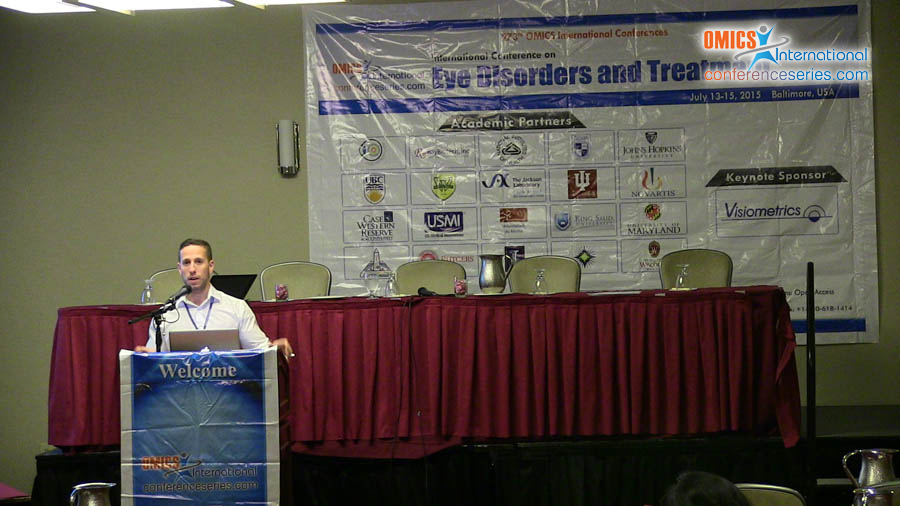Dan Samaha
University of Montreal, Canada
Title: Predicting primary angle closure suspects using anterior segment OCT: A new approach
Biography
Biography: Dan Samaha
Abstract
Objective: To propose a novel non-invasive method for screening patients at risk of angle closure and thus the need for laser peripheral iridotomy using anterior segment OCT imaging. Methods: Horizontal scans of the nasal and temporal anterior chamber angles in glaucoma suspect patients were performed at 870 nm wavelength Fourier-domain OCT (Spectralis-Heidelberg). Schwalbe’s line (S) was identified on the images and using the integrated caliper tool, a line was drawn to the nearest point of the iris (S-I). A glaucoma specialist carried out gonioscopy and irido-corneal angles were graded according to a Shaffer grade. Anterior chamber depths as well as irido-corneal angle measurements were also carried out using Pentacam imaging. Spearman ï² analysis was performed to assess the correlation between S-I and Shaffer grades as well as between the different Pentacam measurements and Shaffer grades. Furthermore Tukey-Kramer HSD analysis was also carried out to evaluate the statistical differences between the means of S-I and each of the Pentacam measurements for each Shaffer grade. Results: Thirty-four images from forty enrolled subjects were available for analysis. Schwalbe’s line was identifiable in 94% of the total images. Correlation coefficients between S-I measurements and Shaffer grades were 0.81 and 0.77 for nasal and temporal quadrants respectively. The correlation was much lower with Pentacam-measured anterior chamber depth and irido-corneal angle (r=0.55 and 0.37 respectively). The means of S-I for gonioscopically occludable angles were statistically different than the means for gonioscopically wide-open angles. On the other hand the same statistical difference could not be achieved when comparing the means for Pentacam-measured anterior chamber depth and irido-corneal angle with gonioscopic Shaffer grade. The diagnostic cutoff value of S-I for occludable angles was established at 300 µm. Conclusion: The measurement of S-I using anterior segment OCT imaging strongly correlates with gonioscopy and may be a suitable non-invasive alternative for evaluating the risk for angle closure.



